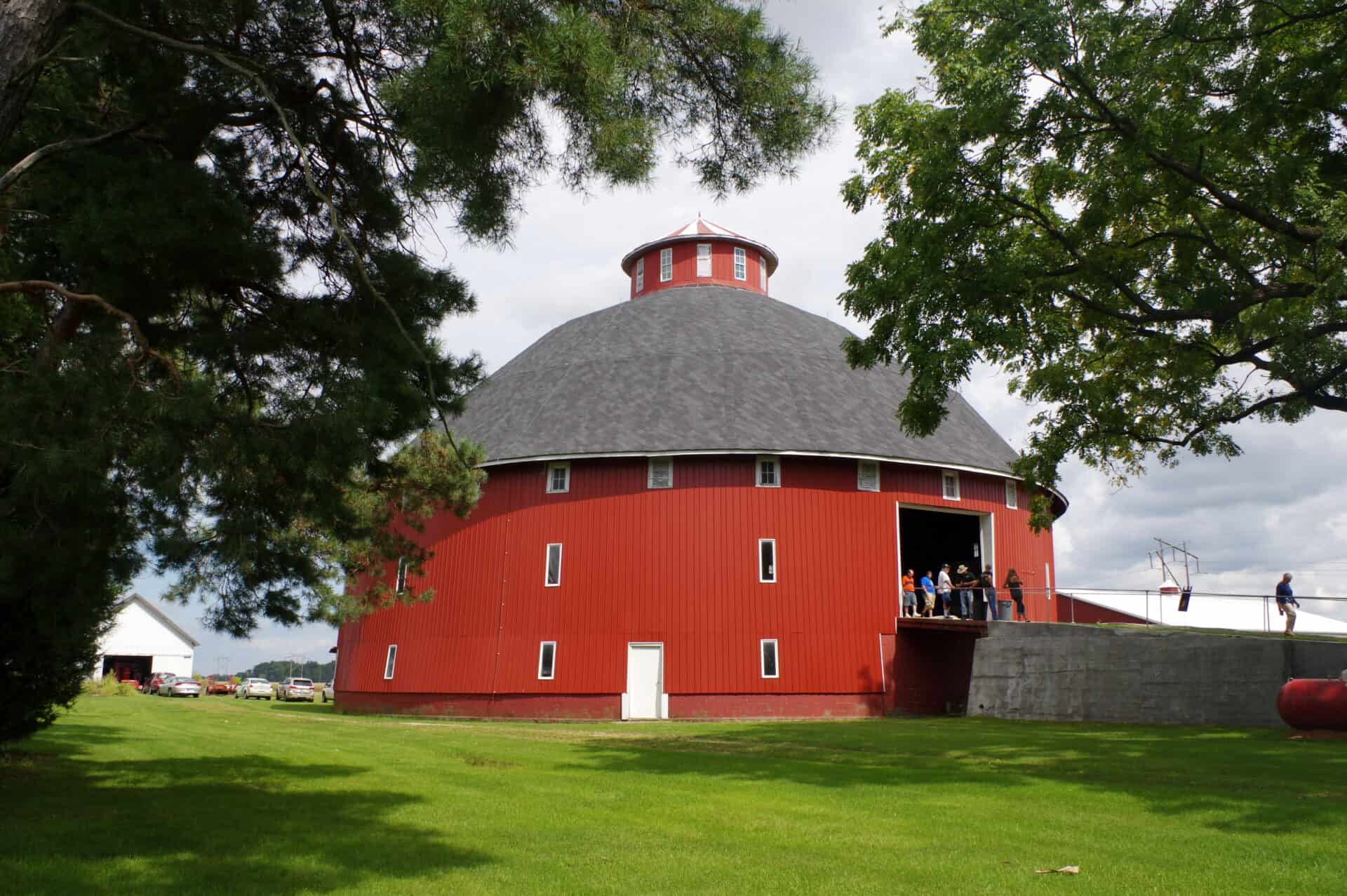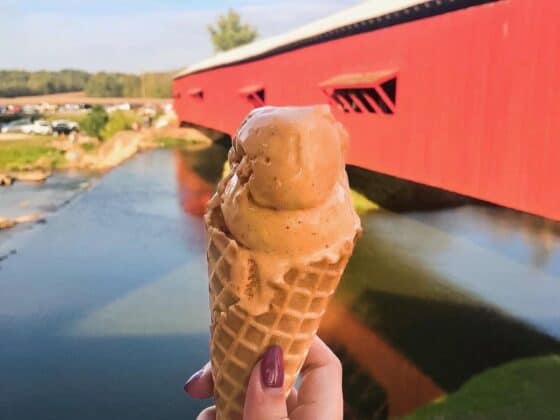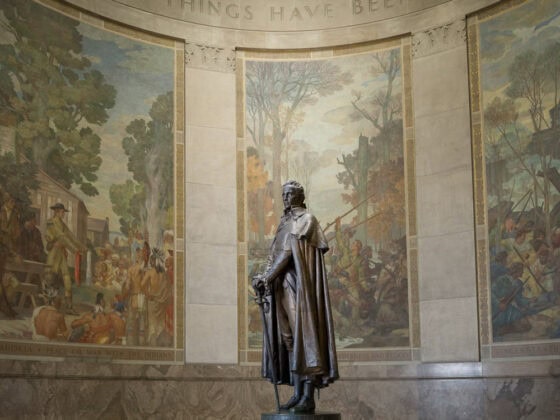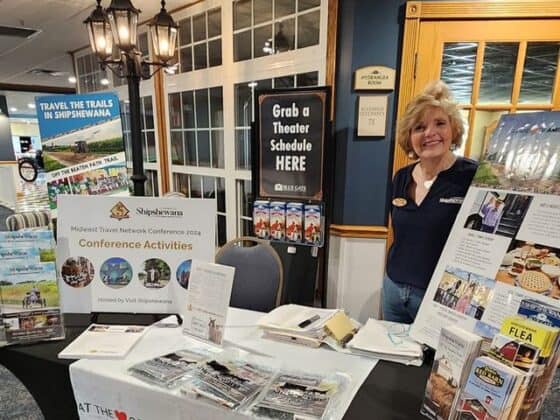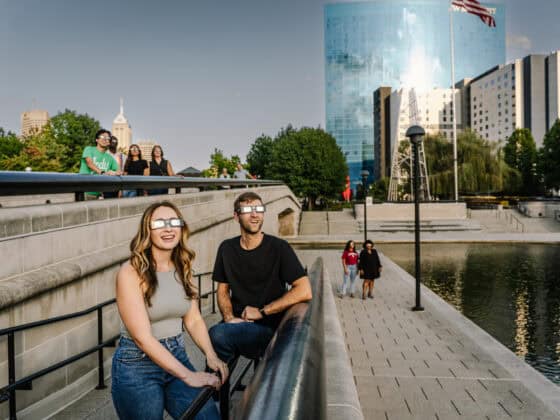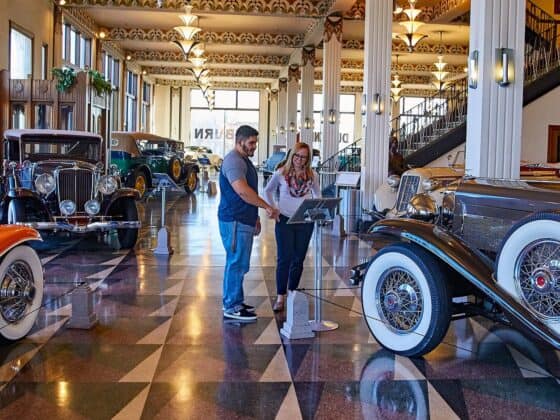story by GLENDA WINDERS
Parke County is certainly Indiana’s star when it comes to covered bridges. They have 31 of the historic structures within their borders and a covered bridge festival each autumn to boot. They also have the chance to walk across the Wabash River on the Montezuma iron bridge. But all throughout the state are remarkable bridges from bygone times and more modern eras, as well as aging barns that serve to recall slower and quieter memories from the past. Using these structures to map out a series of road trips will provide days of fun this season.
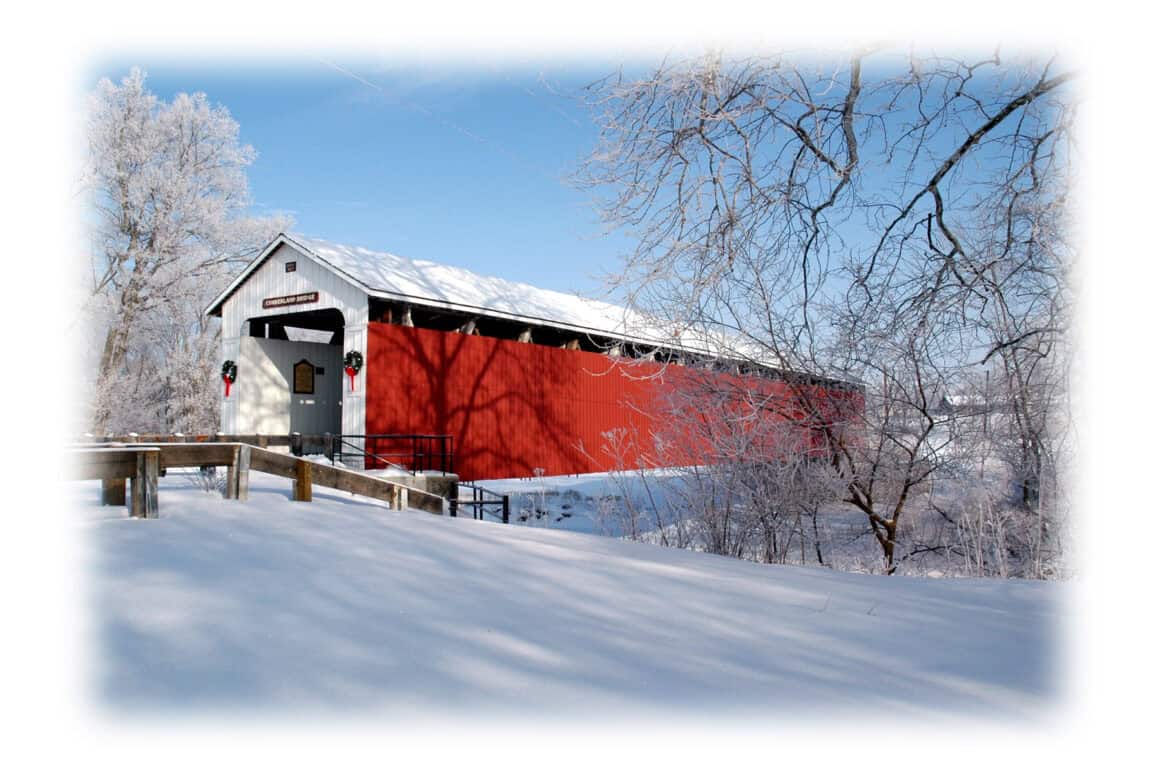
PHOTO: Grant County Visitors Bureau
The John T. Myers Pedestrian Bridge symbolically links Lafayette and West Lafayette, beginning at Riehle Plaza on the Lafayette side and ending in Tapawingo Park in West Lafayette. The site hosts musical performances, festivals, and community celebrations. The River Promenade Deck on the Lafayette side offers views of the Wabash River, fountains, skyline panoramas, and public art. Carroll County lays claim to two popular bridges. Adams Mill Bridge was constructed in 1872 but for 30 years was closed and vandalized. In 1999 townspeople raised the money to restore it and add window openings so travelers could enjoy a view of Wildcat Creek. Also over Wildcat Creek is the Lancaster Covered Bridge, one of only two in the state built using an iron substructure patented by Alpheus Wheelock in 1870.
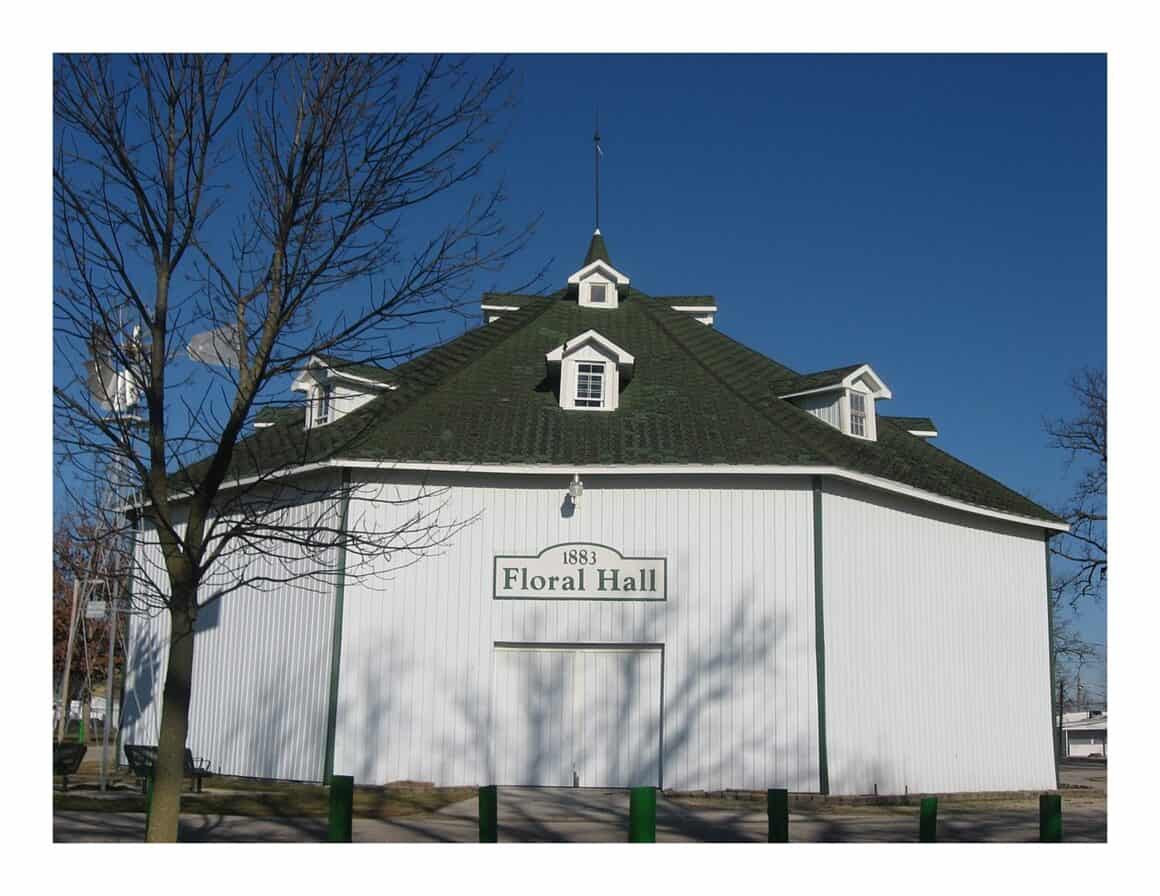
located at the Jay County Fairgrounds in Portland.
PHOTO: Visit Jay County
The Leota Covered Bridge in Scott County, completed in 1995, is the newest one in the state, but its location is historically significant. The spot where it crosses Cooney Creek is at the intersection of two of the oldest trails that crossed southern Indiana in the 18th century — the Cincinnati Trace and the South Bloomington Trail. Also here is a barn that today stands on the site of the Scott County Heritage Center and Museum. It was dismantled at another location and brought here to be reassembled, and now it is the venue for weekly sales of donated items by the Friends of the Museum.
The 181-foot-long Cumberland Bridge spans the Mississinewa River at Matthews in Grant County and also serves as the centerpiece of a Labor Day festival each year that features an antique tractor pull, a steam-powered sawmill, horse rides, and the like.
Another iron bridge that dates back to 1916-1917 connects Hancock and Rush counties. Officially registered as the County Line Bridge, it is affectionately known by locals as “the Great Iron Lady of Blue River.” The structure is painted bright red, making it a favorite setting for local and visiting photographers.
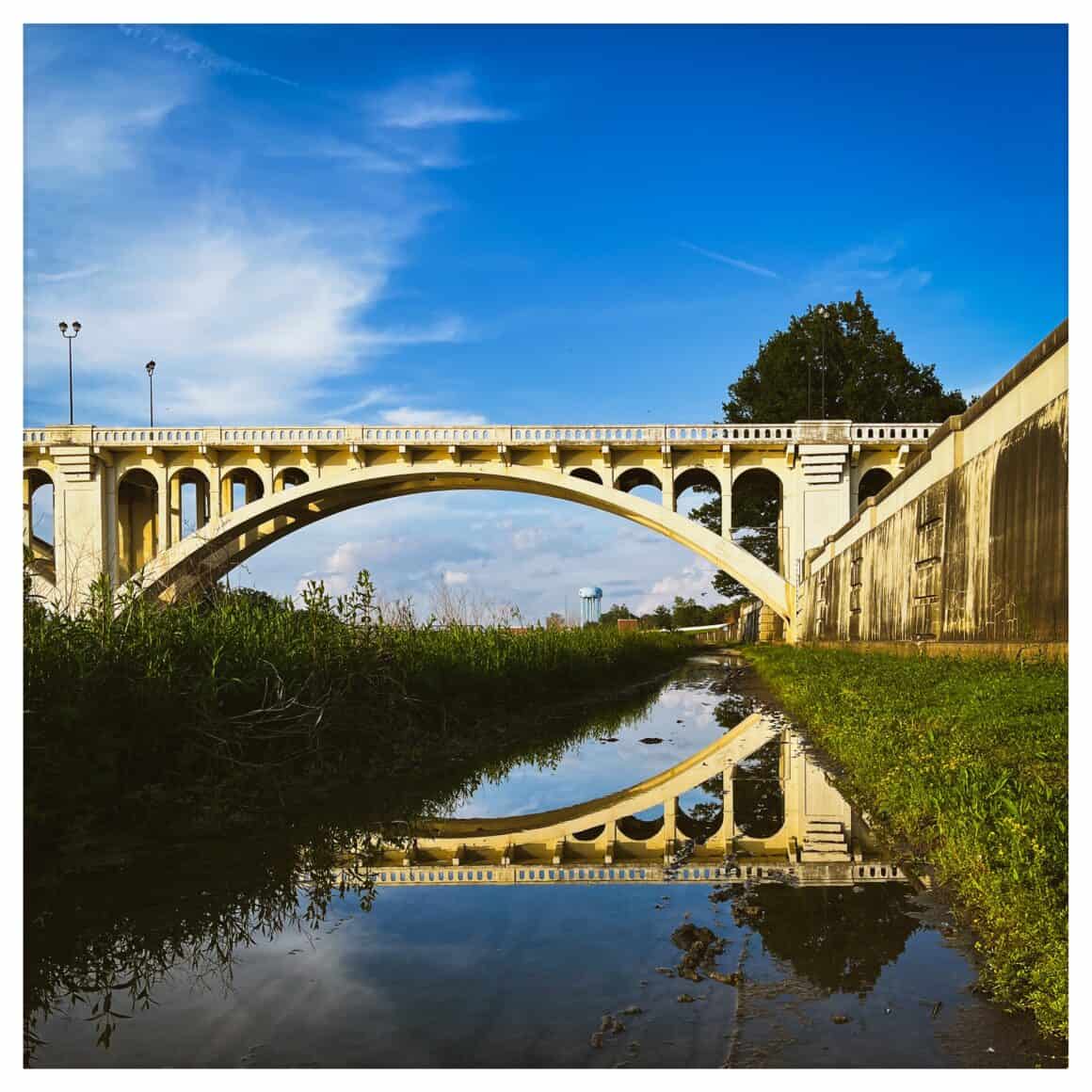
PHOTO: Vincennes/Knox County Visitors and Tourism Bureau
Once silos with grain elevators came into use in 1882, it wasn’t long until farmers began building their barns around them. It made perfect sense for feeding their cattle since they no longer had to walk the entire length of a rectangular building to get the job done. Some 152 round barns were constructed in the state between 1889 and 1936, and 73 still remained in 2018.
Besides its remarkable bridge, Hancock County is also home to the Frank Littleton Round Barn, the largest (102 feet in diameter) in the state. It was completed around 1903 and nearly destroyed by a tornado in 2023. Thanks to the Indiana Barn Foundation, in collaboration with barn expert Rick Collins of Trillium Dell Timberworks, the structure was saved.
Fulton County, however, takes the prize for having the greatest number of round barns — 17 at one time. Built between 1900-1924 after a drawing done by the University of Illinois, the barns were thought to be faster, cheaper and more economical. All of the lumber was one inch thick and green so that it would form a circle, unlike traditional barns with huge beams across them. C.V. Kindig and sons built 11 of the round barns in the county, and seven are still standing today.
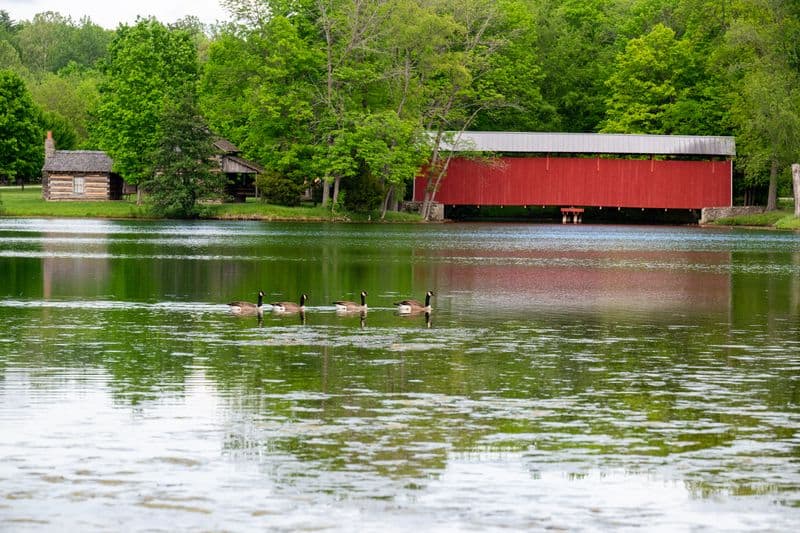
Barns with multiple sides provided the same benefits as round barns but with some added advantages. They were easier and cheaper to build because their walls were straight instead of circular, they could better withstand the prairie winds and their space could be more efficiently utilized.
An octagonal building called Floral Hall or the Round Building sits at the fairgrounds in Jay County. A two-and- a-half-story frame building with vertical board siding and battens, it was built in 1891. Each side measures approximately 33 feet long. But Jay County has had several more typical structures, too. Among those remaining are the Rebecca Rankin and Holdcraft round barns.
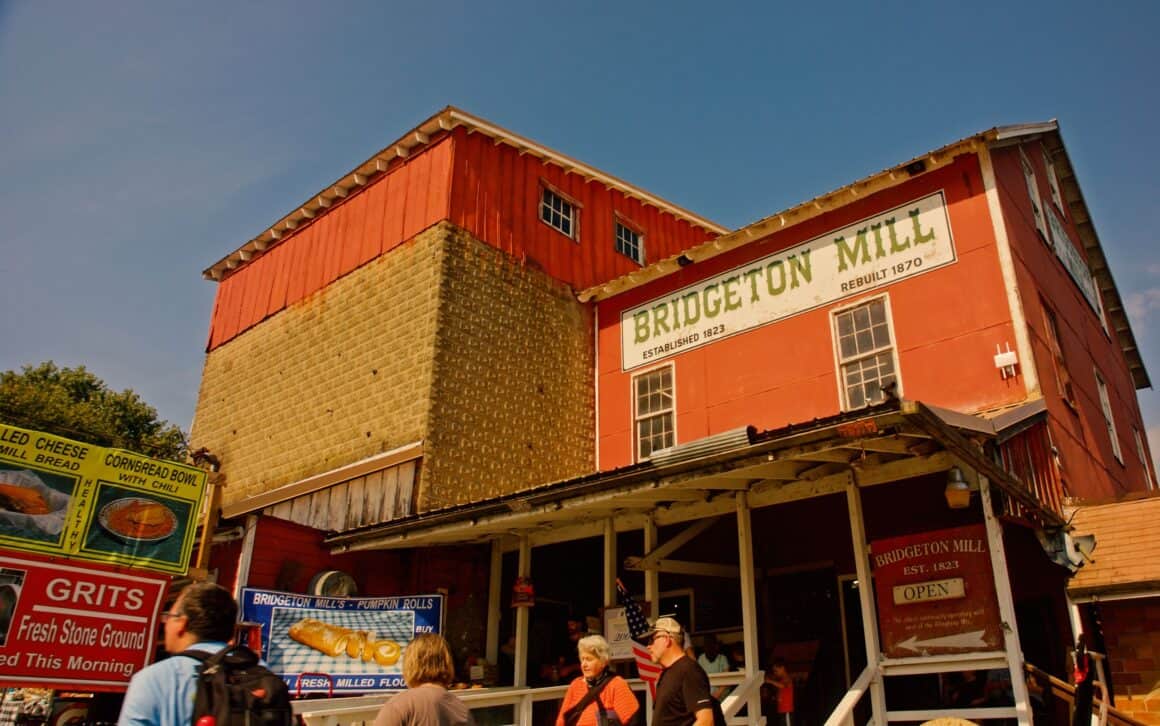
The nonagonal (nine-sided) Gothic Revival Door Prairie Barn is one of the most famous and popular buildings in La Porte. It takes its name from having been built in the area of La Porte County that was a natural opening through the thick forest of northern Indiana. For that reason, early settlers named it “The Door,” and the French explorers called it the French equivalent, ”La Porte.”
The Amish history in LaGrange County means you’ll be able to spot some significant structures, including the Brown Swiss Dairy Round Barn. This 12-sided non-wood polygonal barn is an architectural form considered obsolete from the 1930s.


